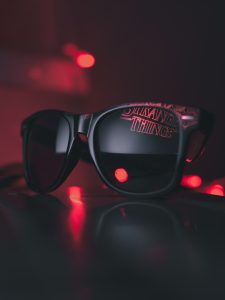How to Master the Use of Nostalgia like “Stranger Things” to Create More Persuasive Content
Published on September 24, 2019, at 8:53 a.m.
by Kalicia Bateman.
The Netflix hit “Stranger Things” masterfully harnesses 80s nostalgia and you can too, resulting in increased audience action.

When the trailer for the third season of the Netflix original series “Stranger Things” was released, I immediately texted my friends and family to alert them. I relayed my crazy plot theories, and we discussed how “Stranger Things” powerfully harnesses the magic of the 80s. During a conversation with my older brother I remarked, “[Stranger Things] makes me feel nostalgic for the 80s, which is weird because I wasn’t even alive then.”
“Stranger Things” harnesses the power of nostalgia by re-creating the 80s with almost perfect accuracy: the cars, the clothes, the family dynamics and social structure of the decade. Viewers love it.
The strategy of harnessing and creating nostalgia isn’t just reserved for hit Netflix original TV shows, however. You can use it in public relations: in messages, campaigns, news releases and feature stories, and it isn’t hard to do.
While investigating how nostalgia could be effectively used in public relations, I came across powerful examples and specific tips for applying it. I combined what I learned with ideas of my own, and that’s what I’m going to share with you, condensed into four tips.
Understand your audience
Before you jump into creating any messaging, you need to know exactly who you want to reach.
It is important to research your target audience’s demographics and psychographics. Make sure you understand where they came from, what decade they would have grown up in, what world events they may have experienced, and what media they would have consumed.
As you tap into the decade and corresponding events that shaped your audience, you invite them to walk down memory lane, creating increased feelings of connection. When people feel more connected they are more likely to act, and action is the desired result of public relations.
Focus on emotion
Re-create memories for your viewers through emotional and nostalgic content.
Coca-Cola harnessed the emotional power of nostalgia in an ad for Coca-Cola Life, a low-calorie version of Coca-Cola created in Argentina and Chile. With the Bee Gees’ song “To Love Somebody” playing in the background, the ad depicts a young couple as they navigate the ups and downs of married life and starting a family. At the climax of the ad, it appears that the young, worn-out father cannot carry on with the stresses of a young family. At this breaking point, his wife comes to him, presenting a Coca-Cola and a positive pregnancy test. Although it seems he is going to cry out in agony, his facial expression shifts to pure joy at the news.
Imagine how your parents might feel watching that ad. Or even how young couples might feel as their own current experiences are displayed before them.
Link nostalgia to your company
Tap into nostalgia that aligns with your company or service. Don’t try to create nostalgia that doesn’t fit your company’s image or timeline.
Microsoft Windows successfully aligned nostalgia with its company through an ad for Internet Explorer, in which it demonstrated what it was like to grow up in the 90s. It linked this time period to Internet Explorer, as it progressed through the 90s with us: through the bowl haircuts, light-up shoes and the “Oregon Trail.”
This ad approach worked because Windows was around in the 90s. Microsoft wasn’t trying to tap into a decade that it wasn’t a part of. Therefore, audience members will be able to see how far Windows and Internet Explorer have come, as they reminisce on how times have changed since the questionable style choices of the 90s.
Do not get trapped in the past
When using nostalgia as a strategy in your public relations projects, harness the magic of the past, but don’t get us stuck there. Present something new and make us curious about what you will do next.
In 2017, Nokia released the Nokia 3310, a remodeled version of its 2000 cellphone, which was more like a small brick than a cellular device. The remodel was complete with T9 texting and no Wi-Fi capability. However, it has an incredible battery life and the classic game “Snake” to make you feel at home in the early 2000s.
The problem is that there isn’t a high demand for retro cellphones. People like their smartphones and look forward to new advances in smartphone technology.
Nokia provides us with an example of nostalgia, not because it should. It effectively brought us back to 2000 and got us stuck there, and nobody wants that.
As you research and understand your target audience, focus on creating emotion through your messaging, link nostalgia to your company, and present something new through a lens of the past, you can’t go wrong.
As a friend to a friend, effectively using nostalgia will enhance your messages and content, resulting in increased audience action.
And as Eleven from “Stranger Things” would say: “Friends don’t lie.”
Kalicia Bateman is a student at Brigham Young University studying public relations. Originally from Vancouver, Canada, she enjoys music, writing, hiking and curating her personal meme collection.




